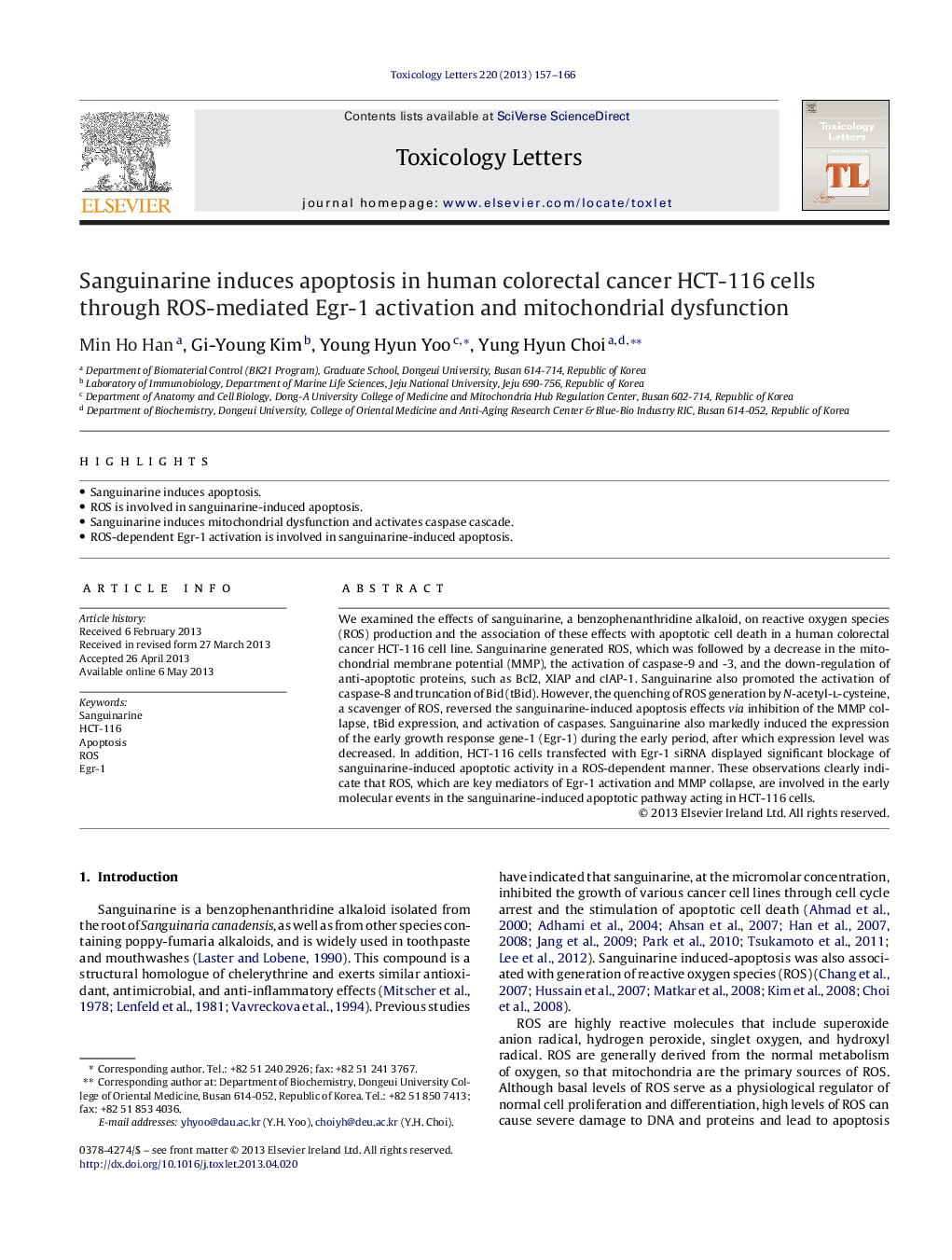| Article ID | Journal | Published Year | Pages | File Type |
|---|---|---|---|---|
| 2599185 | Toxicology Letters | 2013 | 10 Pages |
•Sanguinarine induces apoptosis.•ROS is involved in sanguinarine-induced apoptosis.•Sanguinarine induces mitochondrial dysfunction and activates caspase cascade.•ROS-dependent Egr-1 activation is involved in sanguinarine-induced apoptosis.
We examined the effects of sanguinarine, a benzophenanthridine alkaloid, on reactive oxygen species (ROS) production and the association of these effects with apoptotic cell death in a human colorectal cancer HCT-116 cell line. Sanguinarine generated ROS, which was followed by a decrease in the mitochondrial membrane potential (MMP), the activation of caspase-9 and -3, and the down-regulation of anti-apoptotic proteins, such as Bcl2, XIAP and cIAP-1. Sanguinarine also promoted the activation of caspase-8 and truncation of Bid (tBid). However, the quenching of ROS generation by N-acetyl-l-cysteine, a scavenger of ROS, reversed the sanguinarine-induced apoptosis effects via inhibition of the MMP collapse, tBid expression, and activation of caspases. Sanguinarine also markedly induced the expression of the early growth response gene-1 (Egr-1) during the early period, after which expression level was decreased. In addition, HCT-116 cells transfected with Egr-1 siRNA displayed significant blockage of sanguinarine-induced apoptotic activity in a ROS-dependent manner. These observations clearly indicate that ROS, which are key mediators of Egr-1 activation and MMP collapse, are involved in the early molecular events in the sanguinarine-induced apoptotic pathway acting in HCT-116 cells.
